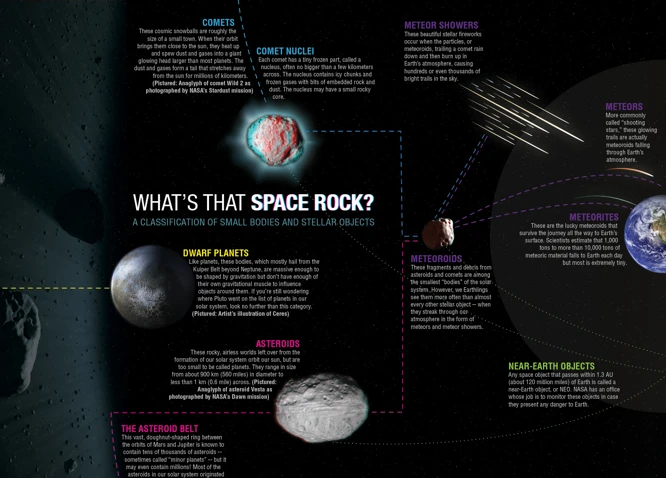As stargazers cast their eyes towards the heavens on a clear night, they may be treated to a captivating display of light streaking across the sky. These mesmerizing phenomena, known as meteor showers, have long held a sense of mystery and wonder for both astronomers and laypeople alike. But have you ever wondered about the origins and composition of these cosmic fireworks? In this article, we will delve into the science behind meteor showers, exploring the cosmic sources from which they originate, the intricate process through which they enter Earth’s atmosphere, and the fascinating composition that gives them their unique characteristics. So prepare to embark on a journey through the vastness of space and discover the secrets of meteor showers.
Contents
- The Science behind Meteor Showers
- Originating from Space
- Entering Earth’s Atmosphere
- Composition of Meteor Showers
- Meteor Shower Classification
- Conclusion
-
Frequently Asked Questions
- 1. How often do meteor showers occur?
- 2. Do all meteoroids become meteors?
- 3. Can meteor showers be seen from anywhere on Earth?
- 4. How fast do meteoroids travel through the atmosphere?
- 5. Can meteor showers pose a threat to Earth?
- 6. How long does a typical meteor shower last?
- 7. Can meteor showers be seen during the daytime?
- 8. How are meteor showers named?
- 9. What causes the different colors of meteors?
- 10. Can meteor showers be heard as well as seen?
- References
-
Frequently Asked Questions
- 1. What causes a meteor shower?
- 2. How often do meteor showers occur?
- 3. Can meteor showers be seen at any time of the year?
- 4. How fast do meteors travel?
- 5. Are meteor showers dangerous?
- 6. Can meteor showers be heard?
- 7. Are all shooting stars part of a meteor shower?
- 8. Can meteor showers be seen from space?
- 9. Can meteor showers occur on other planets?
- 10. Can meteor showers be predicted?
- References
- Read More
The Science behind Meteor Showers
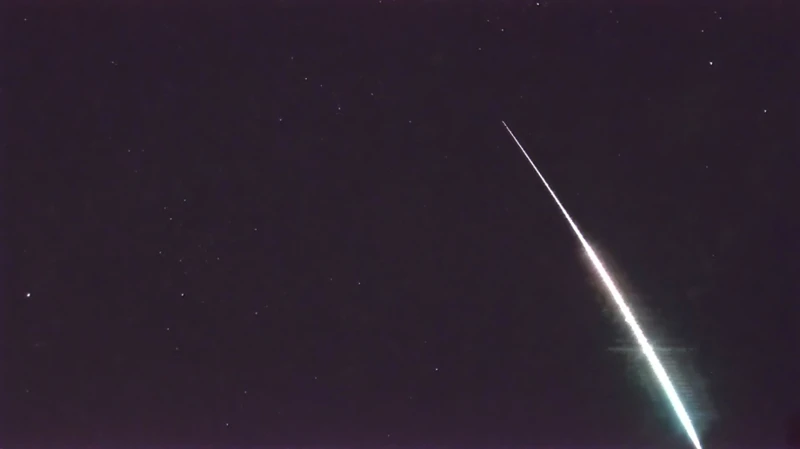
Meteor showers are not mere random displays of celestial fireworks. They are the result of a fascinating scientific phenomenon that can be explained by understanding the science behind them. These captivating displays of light are caused by the Earth’s orbit around the Sun intersecting with the path of a comet or asteroid. When Earth passes through the debris field left behind by these cosmic travelers, small pieces, called meteoroids, enter our atmosphere at incredible speeds. Friction with the air causes the meteoroids to heat up and vaporize, creating the beautiful streaks of light known as meteors.
To further comprehend the science behind meteor showers, it’s crucial to recognize the role of comets. Comets are icy objects that originate from the outer regions of our solar system. As they approach the Sun, the heat causes the ice to vaporize, releasing gas and dust particles. Over time, comets leave behind a trail of debris known as a meteoroid stream. When the Earth intersects one of these streams, it gives rise to a meteor shower. Some well-known meteor showers, such as the Perseids and the Geminids, recur annually due to the predictable nature of their respective comet trails.
By studying the science behind meteor showers, scientists can gain valuable insights into the composition and dynamics of our solar system. Meteor showers provide a glimpse into the abundant presence of small celestial bodies, such as comets and asteroids, that continuously inhabit our cosmic neighborhood. Understanding these phenomena enhances our comprehension of the intricate interplay between celestial bodies and our own planet, deepening our knowledge of the universe we inhabit.
Now that we have explored the science behind meteor showers, let’s delve into their captivating origins and the cosmic sources from which they originate.
Originating from Space
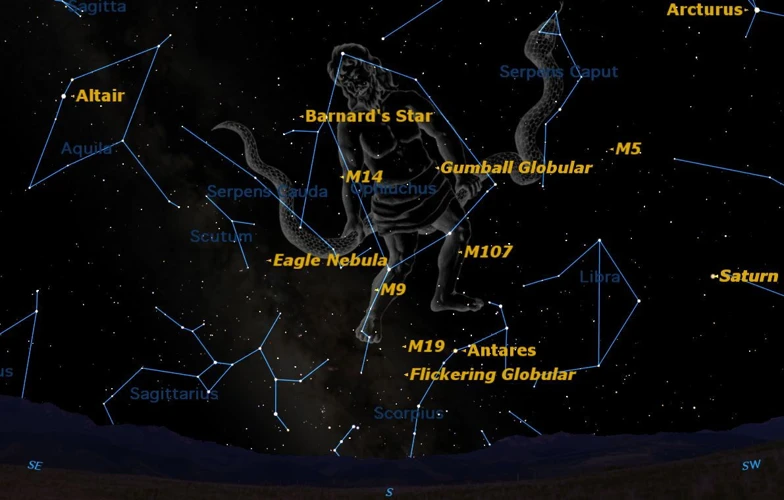
The mesmerizing phenomenon of meteor showers originates from the vastness of space, where cosmic sources give birth to these spectacular displays of celestial beauty. One of the primary sources of meteor showers is comets. Comets, composed of ice, rock, and dust, journey through our solar system on elliptical orbits. As they approach the Sun, the heat causes the icy nucleus to vaporize, releasing gas and dust particles into their surroundings. These particles spread out along the comet’s path, forming a meteoroid stream. When the Earth crosses paths with these streams, our planet becomes a participant in a cosmic dance of meteors streaking through the atmosphere. Additionally, meteor showers can also be caused by the debris field left behind by asteroids traveling through space. These celestial objects, remnants of ancient collisions, can produce meteor showers when their fragments intersect with Earth’s orbit. The origins of meteor showers lie in the depths of space, as comets and asteroids pave the way for captivating displays that captivate our eyes and fuel our curiosity about the universe we inhabit. For more celestial wonders, you might be interested in the captivating story of the Ophiuchus constellation or the exploration of the Scorpius constellation. And if you’re eager to capture the beauty of celestial events, don’t miss out on our eclipse photography tips and techniques.
Cosmic Sources of Meteor Showers
When it comes to the cosmic sources of meteor showers, two main culprits take center stage: comets and asteroids. Comets, as mentioned earlier, are icy objects that originate from the outer reaches of our solar system. As they orbit the Sun, they leave behind a trail of debris in the form of dust and rocks. When the Earth’s orbit intersects with these debris trails, we witness the mesmerizing phenomenon of a meteor shower.
Asteroids, on the other hand, are rocky objects that also inhabit our solar system. They are found mainly in the asteroid belt, a region located between the orbits of Mars and Jupiter. Similar to comets, when an asteroid’s path intersects with Earth’s orbit, it can give rise to a meteor shower. These asteroid-induced meteor showers are often less predictable and have different characteristics compared to those caused by comets.
Interestingly, some meteor showers have been associated with specific comets or asteroids that have left behind distinctive debris streams. For example, the extraordinary Orionid meteor shower is linked to the famous Halley’s Comet. The dust left behind by the comet’s previous visits to our inner solar system creates an annual meteor shower in late October. Additionally, the Perseids meteor shower, one of the most popular showers, is associated with the comet Swift-Tuttle. Every August, Earth passes through the dust and debris stream left by this comet, resulting in a breathtaking display of meteors.
Understanding the cosmic sources of meteor showers is essential in predicting and studying these celestial events. By studying the orbits and characteristics of comets and asteroids, astronomers can determine when and where meteor showers are likely to occur. This knowledge not only enables us to witness and appreciate the beauty of these displays but also provides valuable data for research purposes. So, the next time you marvel at a shower of shooting stars, remember that the cosmic sources behind these magical displays are comets and asteroids, leaving behind their cosmic crumbs for Earth to pass through.
Understanding Meteoroids and Comets
To truly understand meteor showers, we must delve into the intriguing world of meteoroids and comets. Meteoroids are small rocky or metallic objects that travel through space. They can vary in size, ranging from tiny grains of sand to larger boulders. These meteoroids are the building blocks of meteor showers, as they are the objects that enter Earth’s atmosphere and create the dazzling spectacle of meteors streaking across the night sky.
Comets, on the other hand, are celestial bodies composed of a mixture of ice, dust, and rocky material. They typically originate from the outer regions of our solar system, far beyond the orbit of Neptune. As a comet approaches the Sun, the heat causes the icy nucleus of the comet to vaporize and release gas and dust particles into space. These particles spread out along the comet’s orbit, forming a trail of debris known as a meteoroid stream.
When the Earth crosses paths with a meteoroid stream left behind by a comet, the meteoroids encounter our planet’s atmosphere. As they enter the atmosphere, the friction and compression caused by the high speeds at which they travel cause them to heat up intensely. This process, called ablation, vaporizes the outer layer of the meteoroid, creating a glowing trail of gas and ionized particles. This glowing trail is the visible phenomenon we commonly refer to as a meteor.
Comets play a significant role in the creation of meteor showers. As comets orbit the Sun, they leave behind trails of debris that intersect with Earth’s orbit. Each time our planet crosses one of these trails, we experience a meteor shower. The composition of a meteoroid stream can vary depending on the specific comet from which it originated. Some meteoroids may contain minerals, metals, and organic compounds that provide valuable insights into the early formation of our solar system.
Understanding the nature of meteoroids and comets is crucial for unraveling the mysteries of meteor showers. By studying their compositions, scientists can gain knowledge about the fascinating processes that shaped our solar system and continue to influence celestial events to this day. The next time you witness a meteor shower, remember that the dancing lights overhead are the result of the intricate relationship between our planet, comets, and the countless meteoroids traversing the vastness of space.
Entering Earth’s Atmosphere
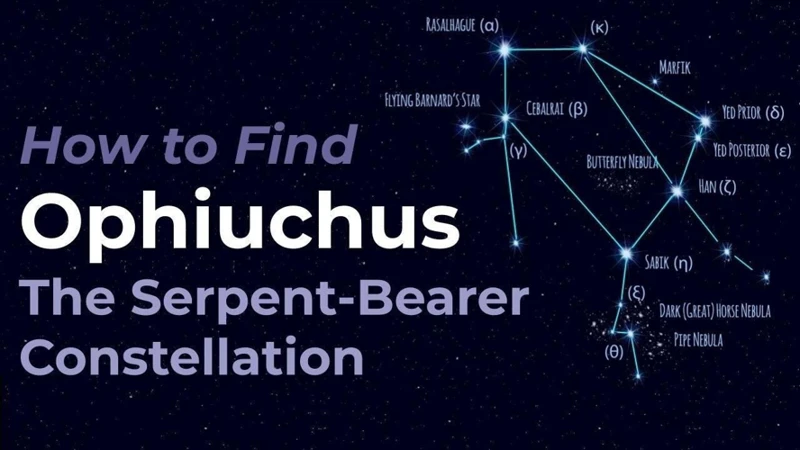
Once the meteoroids from a celestial debris field are set on a collision course with Earth, they embark on a thrilling journey through our planet’s atmosphere. This atmospheric entry process is a spectacle in itself, as the meteoroids encounter intense heat and extreme pressure. As they plunge through the atmosphere at speeds of around 25,000 to 160,000 miles per hour, the air in front of them compresses, heating the meteoroid and causing it to glow brightly. This visible phenomenon is what we observe as a meteor streaking across the sky. The dazzling trail left behind is a result of the vaporized meteoroid and the ionization of surrounding particles in the atmosphere. The majority of the meteoroid is consumed during this fiery descent, with only small fragments managing to reach the Earth’s surface, where they are then known as meteorites. Through the atmospheric entry process, meteor showers provide us with a breathtaking celestial spectacle while also offering scientists valuable insights into the dynamics of our planet’s atmosphere.
Flaring Up: The Atmospheric Entry Process
The Atmospheric Entry Process: Flaring Up
The atmospheric entry process is a critical stage in the journey of meteoroids as they make their way into Earth’s atmosphere. This process involves several captivating phenomena that contribute to the fiery display we witness during meteor showers.
1. Speed and Kinetic Energy: As meteoroids hurtle through space, they can reach incredible speeds, often exceeding 45,000 miles per hour. The incredible amount of kinetic energy possessed by these fast-moving objects is a result of their velocity and mass.
2. Ablation and Plasma Production: When meteoroids encounter the dense layers of Earth’s atmosphere, the immense air resistance generates substantial heat. This heat causes the outer layers of the meteoroid to vaporize and burn away in a process called ablation. The vaporized material ionizes, forming a plasma trail behind the meteoroid. The plasma trail is responsible for the characteristic glowing streak we observe as the meteoroid travels through the atmosphere.
3. Sonic Booms: The rapid displacement of air molecules as the meteoroid streaks through the atmosphere creates intense shockwaves. These shockwaves produce sonic booms heard as a thunder-like sound on the ground below. The sonic booms occur when the meteoroid travels faster than the speed of sound, which is roughly 767 miles per hour.
4. Coloration: The appearance and color of a meteor depend on various factors, such as the composition of the meteoroid and the elements present in the atmosphere. For example, meteors rich in sodium produce a yellow color, while those containing magnesium emit a blue-green hue. The wide range of colors adds to the visual spectacle of meteor showers.
It is important to note that, despite the intense heat generated during the atmospheric entry process, most meteoroids completely disintegrate before reaching the Earth’s surface. Only a small fraction of larger meteoroids make it through the atmosphere and land as meteorites.
Understanding the atmospheric entry process is crucial for scientists studying meteor showers. By analyzing the characteristics and behavior of meteors, researchers can gain insights into the composition, physical properties, and dynamics of these celestial objects. The next segment will explore another fascinating aspect of meteor showers—the science of meteors and the creation of visible trails.
Creating Visible Trails: The Science of Meteors
Creating Visible Trails: The Science of Meteors
When meteoroids enter Earth’s atmosphere, the process of creating visible trails begins. As these small cosmic particles travel through the atmosphere, they experience extreme compression and heating due to the intense air resistance. This compression results in a glowing trail of superheated gas and surrounding debris, creating the spectacular light show we observe as meteors.
The visible trails of meteors are primarily composed of ionized gas molecules, such as oxygen and nitrogen. The intense heat generated during atmospheric entry excites these molecules, causing them to emit energy in the form of visible light. Different molecules emit light at specific wavelengths, giving rise to the various colors we witness during a meteor shower. Brighter and larger meteors, often referred to as fireballs, leave behind longer and more vibrant trails that can last several seconds.
The brightness of meteors, also known as their magnitude, is determined by factors such as their size, composition, and velocity. Larger meteoroids typically produce brighter meteors due to their higher mass and increased kinetic energy. Additionally, the composition of the meteoroid influences the color of the visible trail. For example, meteors containing iron are known to produce yellow or orange colors, while those rich in magnesium tend to appear green.
The science of meteors has been advanced through the use of observational techniques such as photometry and meteor spectroscopy. Photometry involves measuring the brightness of meteors using specialized cameras and sensors. By analyzing the changes in brightness over time, scientists can infer important details about the size, composition, and trajectory of the meteoroids.
Meteor spectroscopy, on the other hand, involves analyzing the light emitted by meteors using a technique called spectroscopy. This method allows scientists to identify the specific elements present in meteoroids by analyzing the unique pattern of wavelengths in their emitted light. Spectroscopic analysis of meteor spectra has revealed the presence of elements such as iron, magnesium, sodium, and calcium.
Studying the science of meteors and analyzing their visible trails provides valuable insights into the composition and dynamics of meteoroid streams. This knowledge contributes to our understanding of the cosmic sources from which meteor showers originate and allows scientists to make connections between specific meteoroid streams and their parent comets or asteroids.
Now that we have explored the science behind the creation of visible trails during meteor showers, let’s uncover the composition of these fascinating cosmic phenomena and the elements found in meteoroids.
Composition of Meteor Showers
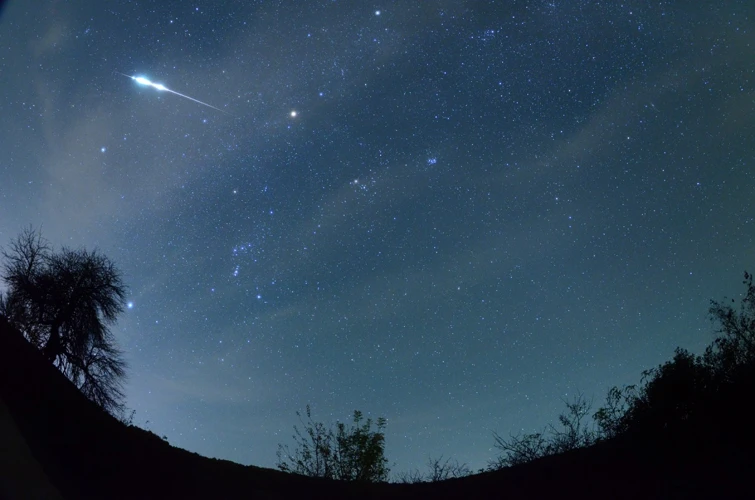
The composition of meteor showers is an intriguing aspect that offers insights into the materials and elements present in these celestial phenomena. Meteoroids, the small particles that create meteors when they enter Earth’s atmosphere, can vary in composition. They are often made up of a mixture of rocks, metals, and organic compounds. One of the most common elements found in meteoroids is iron, which contributes to their unique appearance and brightness. Additionally, meteoroids may contain other elements such as nickel, cobalt, and even precious metals like gold and platinum. Spectroscopy, a scientific technique, helps trace the chemical makeup of meteoroids by analyzing the light they emit or absorb. This enables scientists to identify specific elements and compounds present in these cosmic visitors. Meteorite analysis provides valuable information about the composition of meteoroids that have survived their journey through the atmosphere and landed on Earth. By studying the composition of meteor showers, scientists gain insights into the building blocks of our solar system and the diverse materials present in the vastness of space.
The Elements Found in Meteoroids
The elements found in meteoroids provide valuable clues about the composition of these cosmic travelers. Meteoroids are typically made up of a variety of materials, including metals, rocks, and organic compounds. Here are some of the key elements that have been identified in meteoroids:
Iron (Fe): Iron is commonly found in meteoroids, particularly in those known as iron meteorites. These meteorites are composed mainly of iron and nickel, with traces of other elements. The high iron content gives them their characteristic metallic appearance.
Silicates: Silicates are minerals that contain silicon and oxygen, often combined with other elements such as magnesium, aluminum, or iron. They are a common component of meteoroids and can be found in both rocky and stony-iron meteorites. Silicates are essential building blocks of terrestrial planets, including Earth.
Carbon Compounds: Organic compounds, which contain carbon, are also present in meteoroids. These compounds can include amino acids, sugars, and even the building blocks of DNA. The presence of organic compounds in meteoroids has sparked interest in the study of the origins of life on Earth and the potential for extraterrestrial life elsewhere in the universe.
Noble Gases: Meteoroids also contain noble gases, such as helium, neon, argon, krypton, and xenon. These gases are of particular interest to scientists as they can provide insights into the early stages of our solar system’s formation and the processes that led to the creation of planets.
Other trace elements and compounds, including sulfur, phosphorus, and water, have also been detected in meteoroids. The exact composition of meteoroids can vary greatly depending on their origin and history. Scientists analyze the elements found in meteorites, which are meteoroids that survive their journey to Earth’s surface, to gain a deeper understanding of the early solar system and the processes that shaped it.
Understanding the elements found in meteoroids and their abundance can provide valuable insights into the formation and evolution of our solar system. By studying these cosmic travelers, scientists can piece together the puzzle of our origins and gain a better understanding of the vast universe we inhabit.
Tracing the Chemical Makeup: Spectroscopy
Tracing the chemical makeup of meteor showers is a task that requires sophisticated scientific techniques, with one of the most important methods being spectroscopy. Spectroscopy is a powerful tool that allows scientists to analyze the light emitted or absorbed by a particular object or substance.
In the context of meteor showers, spectroscopy plays a crucial role in determining the elements present in meteoroids. When a meteoroid enters the Earth’s atmosphere, it often undergoes intense heating and vaporization due to the friction with the air. As a result, the meteor becomes a glowing streak of light known as a meteor. This luminous phenomenon emits light that contains valuable information about the composition of the meteoroid.
By carefully analyzing the light emitted by meteors, scientists can identify the specific elements present in the original meteoroid. This is done through the process of spectroscopy, which involves dispersing the light emitted by the meteor into its individual wavelengths, or colors. Different elements present in the meteoroid will bring about distinct patterns of spectral lines, which act as unique signatures for each element.
Spectroscopy allows scientists to detect elements such as iron, nickel, magnesium, and silicon, among others, in meteoroids. This information is crucial for understanding the origins and composition of meteor showers, as it provides insights into the composition of the objects that populate our solar system. Spectroscopic analysis helps determine the type of meteorite that may eventually reach the Earth’s surface, as different meteoroids give rise to different types of meteorites.
Through the meticulous examination of the light emitted by meteors using spectroscopy, scientists gain a deeper understanding of the chemical makeup of meteoroids, shedding light on the building blocks of our solar system. This knowledge contributes to our broader understanding of the universe and our place within it.
Insights from Meteorite Analysis
The analysis of meteorites has provided invaluable insights into the composition and origin of meteor showers. Meteorites are the remnants of meteoroids that survive their journey through Earth’s atmosphere and land on the planet’s surface. These extraterrestrial rocks are like celestial time capsules, preserving information about the early solar system.
Scientists study meteorites using a variety of techniques, including spectroscopy, to determine their chemical makeup. Spectroscopy involves analyzing the light emitted or absorbed by a substance to identify its elemental composition. By examining the spectra of meteorites, researchers can identify the presence of various elements, such as iron, nickel, carbon, and oxygen, among others.
The chemical composition of meteorites varies depending on their type. There are three main types of meteorites: stony, iron, and stony-iron. Each type provides unique insights into different regions of the solar system. For example, stony meteorites, which are composed primarily of silicate minerals, give us clues about the inner parts of asteroids. Iron meteorites, on the other hand, contain large amounts of iron and nickel, indicating that they originated from the cores of differentiated asteroids. Stony-iron meteorites possess a combination of both rocky and metallic components, suggesting that they formed at the boundary between a planet’s core and mantle.
Through meteorite analysis, scientists have been able to unravel the mysteries surrounding the formation and evolution of our solar system. These extraterrestrial rocks have revealed the presence of organic compounds, including amino acids, the building blocks of life. Such discoveries have fueled speculation about the potential role of meteorite impacts in delivering the necessary ingredients for life on Earth.
In addition to their scientific significance, meteorites also have cultural and historical importance. They have been revered by ancient civilizations and have played a significant role in shaping our understanding of the cosmos. The study of meteorites continues to provide new insights into the origins of our solar system and the broader universe.
To learn more about celestial objects and their captivating stories, check out our article on the Ophiuchus constellation.
Meteor Shower Classification
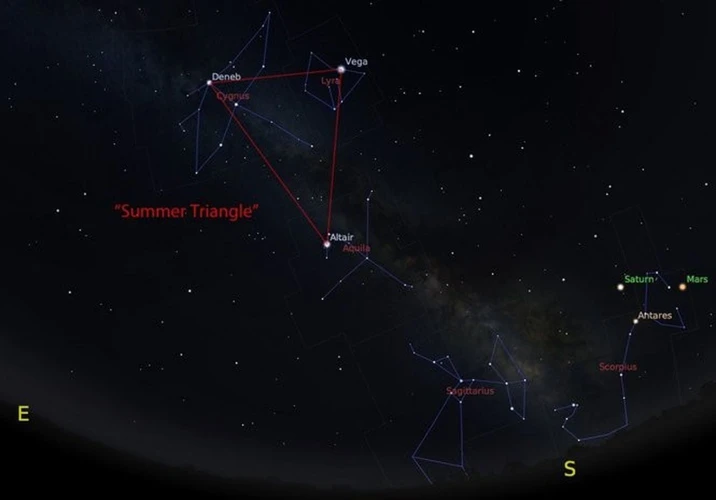
Meteor showers come in various forms and are classified based on their characteristics and patterns. One classification scheme categorizes meteor showers into two main types: annual meteor showers and outbursts and storms. Annual meteor showers are regular cosmic performances that occur around the same time each year and are associated with specific comet trails. Examples include the Perseids, which peak in August, and the Leonids, which peak in November. On the other hand, outbursts and storms are unpredictable celestial displays that occur when Earth encounters a more dense or concentrated region of debris in a comet’s orbit. These events can result in an intensified meteor shower, with a significantly higher number of meteors per hour. The Quadrantids and the Alpha Monocerotids are examples of outbursts and storms that can surprise avid skywatchers with their brief but spectacular shows. Understanding the different classifications of meteor showers allows astronomers to anticipate and appreciate these celestial events throughout the year.
Annual Meteor Showers: Regular Cosmic Performances
Annual meteor showers are like regular cosmic performances that grace our skies each year, captivating observers with their predictable and reliable displays. These recurring celestial events are associated with specific dates and often have a dedicated fan base eagerly awaiting their arrival. Let’s explore some of the well-known annual meteor showers:
1. Perseids: The Perseids, which occur in August, are one of the most famous meteor showers. They are linked to the comet Swift-Tuttle and are known for their fast and bright meteors. The Perseids are a favorite among skywatchers due to their high meteor counts and frequently spectacular fireballs.
2. Leonids: The Leonids, with their radiant located in the constellation Leo, provide a dazzling display each November. These meteors are associated with the comet Tempel-Tuttle and are known for their occasional meteor storms, where rates can reach hundreds or even thousands of meteors per hour.
3. Geminids: The Geminids, which peak in mid-December, are associated with the asteroid 3200 Phaethon rather than a comet. They are known for their slow-moving, bright meteors and are often considered one of the best meteor showers of the year.
4. Lyrids: The Lyrids, which make their appearance in April, are one of the oldest known meteor showers. They are associated with the comet C/1861 G1 Thatcher and are known for their fast and bright meteors. The Lyrids have been observed for over 2,700 years, with records dating back to ancient China.
5. Orionids: The Orionids, associated with Halley’s Comet, put on a show in October. They are named after the constellation Orion, as their radiant point lies near the famous Orion’s Belt. The Orionids are known for their speed and can produce up to 20 meteors per hour at their peak.
These annual meteor showers serve as cosmic reminders of the predictable nature of our universe. They offer the opportunity for amateur and professional astronomers alike to witness the beauty and grandeur of celestial phenomena. So mark your calendars, gather your stargazing gear, and prepare to be mesmerized by the regular cosmic performances of these annual meteor showers.
Outbursts and Storms: Unpredictable Celestial Displays
Outbursts and storms are the thrilling, unpredictable celestial displays that occasionally grace the night sky. Unlike regular annual meteor showers, which follow a predictable pattern, these events bring an extra level of excitement to astronomers and stargazers alike. Outbursts occur when a meteor shower experiences a sudden and significant increase in activity, producing an unusually high number of meteors within a short period of time.
One notable example is the Leonid meteor shower, which has been known to produce outbursts roughly every 33 years. The most famous outburst of the Leonids occurred in 1833, when an astounding number of meteors streaked across the sky, leaving viewers in awe. Such outbursts are caused by the Earth encountering a particularly dense section of the meteoroid stream, resulting in an intensified display of meteors.
Meteor storms, on the other hand, take the unpredictability of outbursts to an even higher level. These rare and remarkable events involve a meteor shower that defies expectations by producing an incredibly high rate of meteors, sometimes even reaching hundreds or thousands per hour. The most famous meteor storm in history is the Great Leonid Storm of 1966, during which observers witnessed an incredible meteor rate of up to 100,000 per hour. Such extraordinary meteor storms are believed to occur when the Earth crosses paths with an unusually dense part of the meteoroid stream.
These outbursts and meteor storms provide astronomers with an opportunity to study exceptional meteoroid streams and gain insights into the dynamics of our solar system. They offer a chance to witness nature’s grand fireworks show, leaving viewers in awe of the vastness and unpredictability of the universe. While the occurrence of these events cannot be precisely predicted, astronomers continue to monitor and study meteor showers in hopes of catching these captivating and rare displays.
Outbursts and storms are the unexpected and breathtaking phenomena that occasionally grace our night sky. These unpredictable celestial displays offer a glimpse into the remarkable variability of meteor showers, providing astronomers and stargazers with thrilling experiences and valuable research opportunities. So, keep your eyes on the sky and be ready to witness the awe-inspiring beauty of these remarkable cosmic performances.
Conclusion

In conclusion, meteor showers are celestial events that captivate our imagination and offer a glimpse into the dynamic and interconnected nature of our universe. We have explored the science behind meteor showers, understanding how they are formed by the intersection of our planet’s orbit with debris left behind by comets and asteroids. The atmospheric entry process and the vaporization of meteoroids result in the mesmerizing streaks of light we observe as meteors. Through the use of spectroscopy and meteorite analysis, scientists gain insights into the chemical composition of meteoroids, shedding light on the elemental makeup of our solar system. Meteor showers are classified into annual showers and unpredictable outbursts, adding an element of surprise to the cosmic displays.
These regular and irregular celestial performances serve as a reminder of the vastness of space and the constant interplay between celestial bodies. They provide valuable opportunities for scientific study and a sense of wonder and awe for enthusiasts and casual observers alike. Whether you witness the spectacle of the Perseids or the Geminids, or explore the stories behind constellations like Ophiuchus, the splendor of meteor showers continues to inspire and ignite our curiosity.
So the next time you find yourself gazing up at the night sky, take a moment to appreciate the delicate balance and grandeur of the universe, knowing that meteor showers are a beautiful reminder of our connection to the cosmos.
Frequently Asked Questions

1. How often do meteor showers occur?
Meteor showers occur regularly throughout the year, with various showers happening at different times. Some meteor showers occur annually around the same date, while others have less predictable schedules.
2. Do all meteoroids become meteors?
No, not all meteoroids become meteors. Many meteoroids burn up in the Earth’s atmosphere before they have a chance to create a visible streak of light. Only a small percentage of meteoroids survive the fiery journey to become meteors.
3. Can meteor showers be seen from anywhere on Earth?
Meteor showers can be seen from different parts of the world, but their visibility can depend on factors such as the shower’s radiant point, time of year, and local weather conditions. Some meteor showers may be more visible from certain regions or hemispheres.
4. How fast do meteoroids travel through the atmosphere?
Meteoroids can travel through the Earth’s atmosphere at speeds ranging from 25,000 to 160,000 miles per hour (40,000 to 257,000 kilometers per hour). These incredible speeds are what cause the intense heat and glowing trails associated with meteors.
5. Can meteor showers pose a threat to Earth?
In most cases, meteor showers do not pose a threat to Earth. The meteoroids that create meteor showers are typically small and burn up completely in the atmosphere. However, larger objects known as asteroids or comets can pose a threat if they collide with Earth, although the chances of such an event occurring are extremely rare.
6. How long does a typical meteor shower last?
A typical meteor shower can last several days to a few weeks, depending on the specific shower. The peak of the shower, where the highest number of meteors can be observed, usually lasts for just a few hours over one or two nights.
7. Can meteor showers be seen during the daytime?
Meteor showers are generally best observed during the nighttime when the sky is dark. However, under certain conditions, particularly during strong meteor showers, it is possible to see meteors during the daytime, although they may be more challenging to spot against the bright sky.
8. How are meteor showers named?
Meteor showers are often named after the constellation from which they appear to radiate. For example, the Perseid meteor shower appears to radiate from the constellation Perseus. This naming convention helps astronomers identify and categorize different meteor showers.
9. What causes the different colors of meteors?
The different colors of meteors are caused by the composition of the meteoroid and the elements it contains. For example, meteors with a higher content of metals like iron can produce bright yellow or orange colors, while those with more magnesium can appear blue or green.
10. Can meteor showers be heard as well as seen?
No, meteor showers cannot be heard as they burn up high in the Earth’s atmosphere. The sound of a meteoroid entering the atmosphere is usually too faint to reach the surface, and any sound that might be produced gets dispersed quickly.
References
Frequently Asked Questions

1. What causes a meteor shower?
A meteor shower is caused by the Earth passing through debris left behind by a comet or asteroid as it orbits the Sun. When the Earth intersects with this trail of cosmic debris, the particles enter our atmosphere and create the spectacular display known as a meteor shower.
2. How often do meteor showers occur?
Meteor showers occur regularly throughout the year, but their frequency varies. Some meteor showers are annual, happening at the same time each year, while others are sporadic or occur in predictable cycles. On average, there are about 12 to 15 meteor showers visible from Earth annually.
3. Can meteor showers be seen at any time of the year?
Yes, meteor showers can be seen at any time of the year, but their visibility depends on various factors such as the timing of the shower, the location of the observer, and the brightness of the moon. Some meteor showers are more prominent and easier to observe than others.
4. How fast do meteors travel?
Meteors, also known as shooting stars, can travel at incredible speeds as they enter the Earth’s atmosphere. On average, meteors travel at speeds of around 25 kilometers per second (56,000 miles per hour) but can reach speeds of up to 72 kilometers per second (160,000 miles per hour).
5. Are meteor showers dangerous?
No, meteor showers are not dangerous to humans. The meteors that create these showers are typically quite small, ranging in size from grains of sand to pebbles. They burn up completely in the Earth’s atmosphere, posing no threat when observed from the ground.
6. Can meteor showers be heard?
No, meteor showers cannot be heard. The sound associated with meteors, often described as a “sizzling” or “crackling” noise, is actually a misperception. The meteors themselves do not produce sound waves as they travel through the vacuum of space or burn up in the atmosphere.
7. Are all shooting stars part of a meteor shower?
No, not all shooting stars are part of a meteor shower. While meteor showers are responsible for the majority of shooting stars observed on Earth, individual meteors called sporadics can be seen at any time. These sporadic meteors are not associated with any known meteor shower.
8. Can meteor showers be seen from space?
Yes, meteor showers can be seen from space, particularly from the vantage point of satellites or the International Space Station (ISS). Astronauts aboard the ISS have reported witnessing stunning meteor showers, providing unique observations of these celestial events.
9. Can meteor showers occur on other planets?
Yes, meteor showers are not exclusive to Earth. Other planets in our solar system, such as Mars and Jupiter, can also experience meteor showers. These showers are caused by the same mechanism of passing through debris left by comets or asteroids, just as on Earth.
10. Can meteor showers be predicted?
Yes, meteor showers can be predicted to a certain extent. Scientists use mathematical models and historical data to forecast the timing and intensity of meteor showers. However, predicting individual meteors within a shower or the occurrence of meteor storms with high precision remains challenging.

